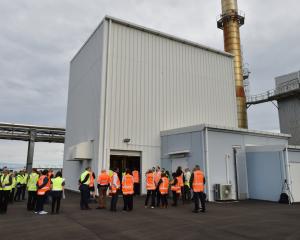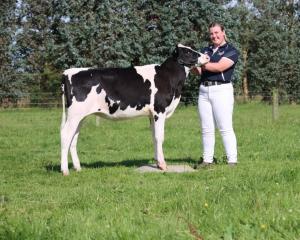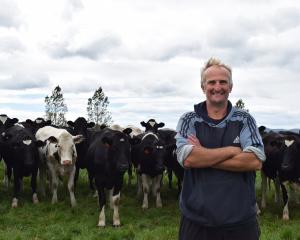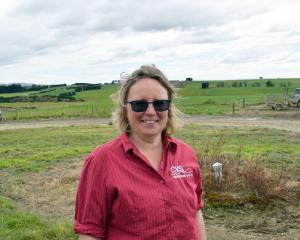AgResearch Invermay soil scientist Ross Monaghan, of Dunedin, said field experiment The Soil Armour Project had been given about $980,000 from the Sustainable Land Management and Climate Change Fund, administered by the Ministry for Primary Industries.
The four-year project was launched in October last year.
Experiment sites are live on a dairy farm on the Telford campus near Balclutha and Dylan Ditchfield’s dairy farm in Wendonside, Northern Southland.
The project title was taken from a principle from regenerative agriculture of maintaining a soil armour to protect soil.

An aim of the project is to explore if it is possible for an appropriate number of cattle to graze on pasture during winter without destroying it.
A goal is for the pasture to be able to grow quickly in spring, without the need for reseeding.
‘‘A rapidly recovering pasture can take up quite a lot of the nitrogen which would otherwise be at risk of leaching into waterways,’’ Dr Monaghan said.

The project would include three consecutive winters including the one just been.
Wendonside had a wetter winter than Telford this year, he said.
About a third of the diet of the cows in the experiment was fresh pasture and the rest was either baleage or hay.
At Telford this winter, cows grazed on 14 experiment plots, about 20m by 20m each.
Some cows grazed a control crop of swedes to compare the pasture crops against.
The cows eating pasture were topped up with baleage.
The soil at Telford was naturally poorly drained so cows caused some mud damage to the pasture this winter.
Consequently, some Telford paddocks needed new pasture seed drilled in at spring.
Next winter, the same number of cows might get more pasture at Telford to graze in a bid to stop pugging.
However, although the Italian ryegrass got ‘‘knocked around’’ at Telford in early July, it was a robust species and growing again by September.
At Wendonside, cows were given hay bales as part of the experiment because Mr Ditchfield had been using it in his wintering system already.
The bale residue provided an extra layer of protection for the soil and was a comfortable place for the cows to lie on.
The residue was created by cows pulling away the outer shell of the bale to eat the middle.
Bale residue left behind for the cows to lie on acts as a ‘‘sponge’’ to soak up the urinary nitrogen the herd excretes.
The bale residue comes at a cost to the farmer but it could provide a benefit to the environment and welfare of the animal.
He expected testing to reveal the hay would hold the urine long enough for the nitrogen in it to break down.
The cows on the Wendonside experiment site had made ‘‘very little mud’’ this winter.
‘‘It survived well.’’
Although the project needs three winters to catch variability in climate, initial signs looked positive, resulting in less mud and cleaner and happier cows.
More data was needed to show any benefit for animal welfare and the environment ‘‘but at the end of winter one, there are some encouraging signs’’, Dr Monaghan said.
For the next two winters, an animal welfare scientist would monitor the behaviour of the herd to quantify the lying experience of the cows.
Cows would also be scored for cleanliness, compared against cows eating crop.
A pasture-based wintering system required more land, Dr Monaghan said.
In winter, a cow ate up to 10sqm of crop a day, such as swedes and kale, compared with the up to 16sq m required to run a pasture system.
Although more land was needed in a pasture system, gains might be made by being able to keep the land that remained in the rotation, as it did not need to be resown as the pasture recovered on its own, he said.
Past research revealed winter forage crops leaked four to five times more nitrogen per hectare than pasture.
He believed farmers had an appetite for an alternative to a crop-based wintering system for many reasons, including improving animal welfare and the environment and navigating new rules from the Government on winter cropping.
Urinary nitrogen was present in lakes and rivers so new methods were needed to protect soil for environmental benefits.
‘‘We hope we can design a system that has those benefits but is also practical and affordable.’’














